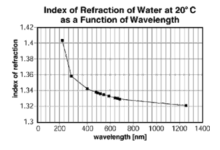General Guidelines To Answering English Language Questions In WAEC

The general guideline to answering English Language questions in WAEC has been up together to assist students for the WAEC, Jamb, and GCE to prepare ahead and be able to know what to meet in the examination hall. This general guide is to assist the candidates to know beforehand what they are going to behold so that it does not look like a new thing to them.
This general guideline to answering English Language questions in WAEC is designed primarily to meet the needs of candidates of schools or college students preparing for their final examination. As they all know all the major areas covered by the syllabus provided by the WAEC body should have been treated in a systematic and fairly comprehensive manner: the writing of essays of different types, comprehension, and summaries; Alexis and structure; the parts of speech; the sentence and different types of clauses; and the important aspect of Oral English – letters and sounds, stress, and intonations.
General Guidelines To Answering English Language Questions In WAEC
Candidates for the WAEC and GCE examinations are to study and pay careful attention to the guidelines that have been listed below. The examination consists of three papers, namely,
- Paper I: Essay, Comprehension, and Summary (2 1/4 hours)
- Paper II: Lexis and Structure (1 hour)
- Paper III: Oral English (40 minutes).
PAPER I
Part A: This is the first of two parts which this Paper consists of. In it, the pupil has six topics to choose from for Essåy-writing and is expected to write on one of the themes The topics cover various kinds of writing: narrative, descriptive, expository, argumentative essays: creative, technical, or scientific writing; reports; letters.
This part of the Paper tests the pupil’s skill in communicating effectively with an audience, given an appropriate situation. It also tests competence in grammar; the proper use of formal features: good paragraphing, interesting presentation of ideas, skillful employment of sentence types and a rich vocabulary; and the use of correct spelling and appropriate punctuation.
The essay should be at least 400 words in length. This means that the pupil will lose for writing an essay that is shorter than 400 words. However, time should not be wasted by counting the words of the essay. A pupil who writes about 7 words on each line will have to write about 57 lines of the Answer Sheet, which comes in about two and a half pages.
If there are more than 7 words written on a line, for the minimum length, the essay will require fewer lines. It is important to note that there is no great advantage in writing too much within the limited time of 50 minutes allowed. The test emphasizes a flawless piece of writing.
Part B: This second part of the Paper is a test of comprehension and Summary. For comprehension there are two short passages to test the pupil’s ability to:
- show understanding of the passage
- by drawing correct answers from the facts stated in the passages and
- by making correct deductions or inferences from the passages;
2. replace words or expressions indicated in the passages with their equivalents;
3. interpret use of common expression to reveal their idiomatic
4. restructure phrases and expressions with suitable grammatical alternatives within sentences; and
5. recognize basic grammatical functions of selected words, phrases or clauses within the context of sentences.
The time allocated to this section is 45 minutes. The passages for the test are such that are within the pupil’s experience, and the language such that is within his scope.
The section on Summary is intended to be done in 40 minutes, and features one fairly long prose passage which is aimed at testing the pupil’s ability to:
- identify only relevant information;
- avoid, in stating his answers to questions, repetition and indulgence in extraneous material;
- present, as briefly as possible, a summary of parts or aspects of the passage; and
- write out a summary, as requested, in clear and precise language.
The passage is normally selected from various fields and disciplines of social, economic, political and cultural interests from different parts of the world.
PAPER II
This one-hour Paper is a multiple-choice test of lexis and structure consisting of 100 items. The items are designed to test:
- Lexis: the use of (a) vocabulary in the normal dictionary meaning of words; (b) idioms, i.e. expressions whose real meanin5 cannot be made out simply by knowing the meanings of the individual words that make up the expressions; and (c) figurative expressions.
- Structure: (a) the recognition of changes in word-forms to show number, tense, degree, possession, etc.; (b) the recognition of the patterns in which words combine to form groups which then becomes sentences; and
- the use of auxilliary verbs.
PAPER III
This Paper consists of two parts namely:
- Listening Comprehension and Recognition which is always written for 40 minutes
- The pupil’s production which is also allowed for 15 minutes.
The first part of the test consists of 50 multiple-choice questions on Listening Comprehension and Recognition of speech features like consonants, vowels, clusters, stress and intonation. This part is expected to be completed in 40 minutes.

In the second part, each pupil is allowed 15 minutes for the of sounds in words and/or sentences and a short impromptu oral compsition on a topic to be chosen from a list of three. These are the basic outline and general guidelines to answering English Language quuestions in WAEC and GCE examinations.
Advice To Candidates Preparing For The WAEC and GCE Examination
It is good for the students preparing for the examination to know precisely what is expected of them to merit a pass. The following hints will be found useful:
- Candidates should treat as many ideas in relation to the topic as they can discuss within the timé allowed.
- Even though the ideas may be old, they should be presented in a new perspective in view of human development, and in an orderly manner.
- The language use in writing should be appropriate and clear to the reader or listener
- Due emphasis should be placed on correctness of language.
- There should be neither bias nor over-zealousness in the writing.
- Candidates should keep within the tifne allocated to each section of each Paper.








